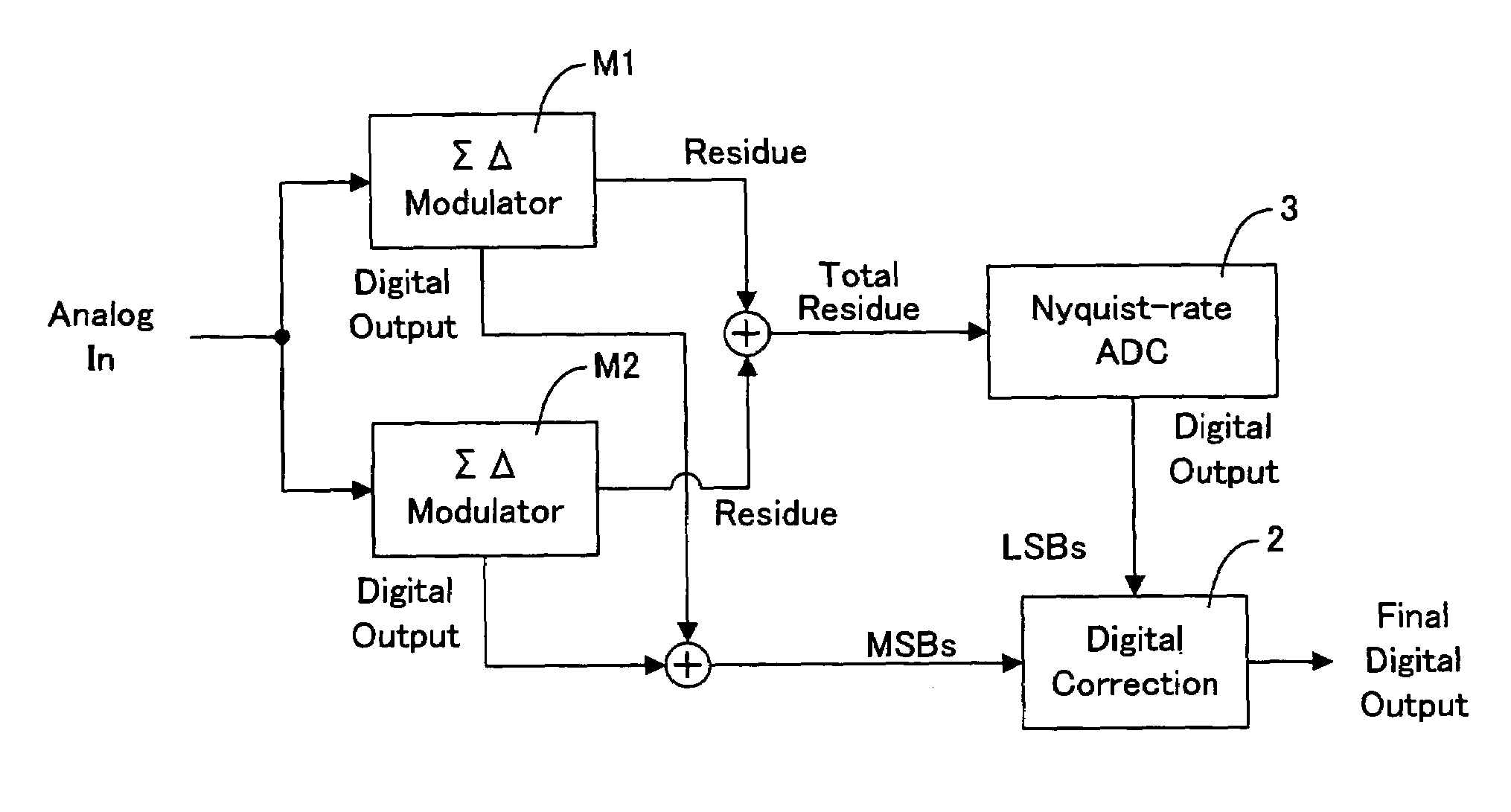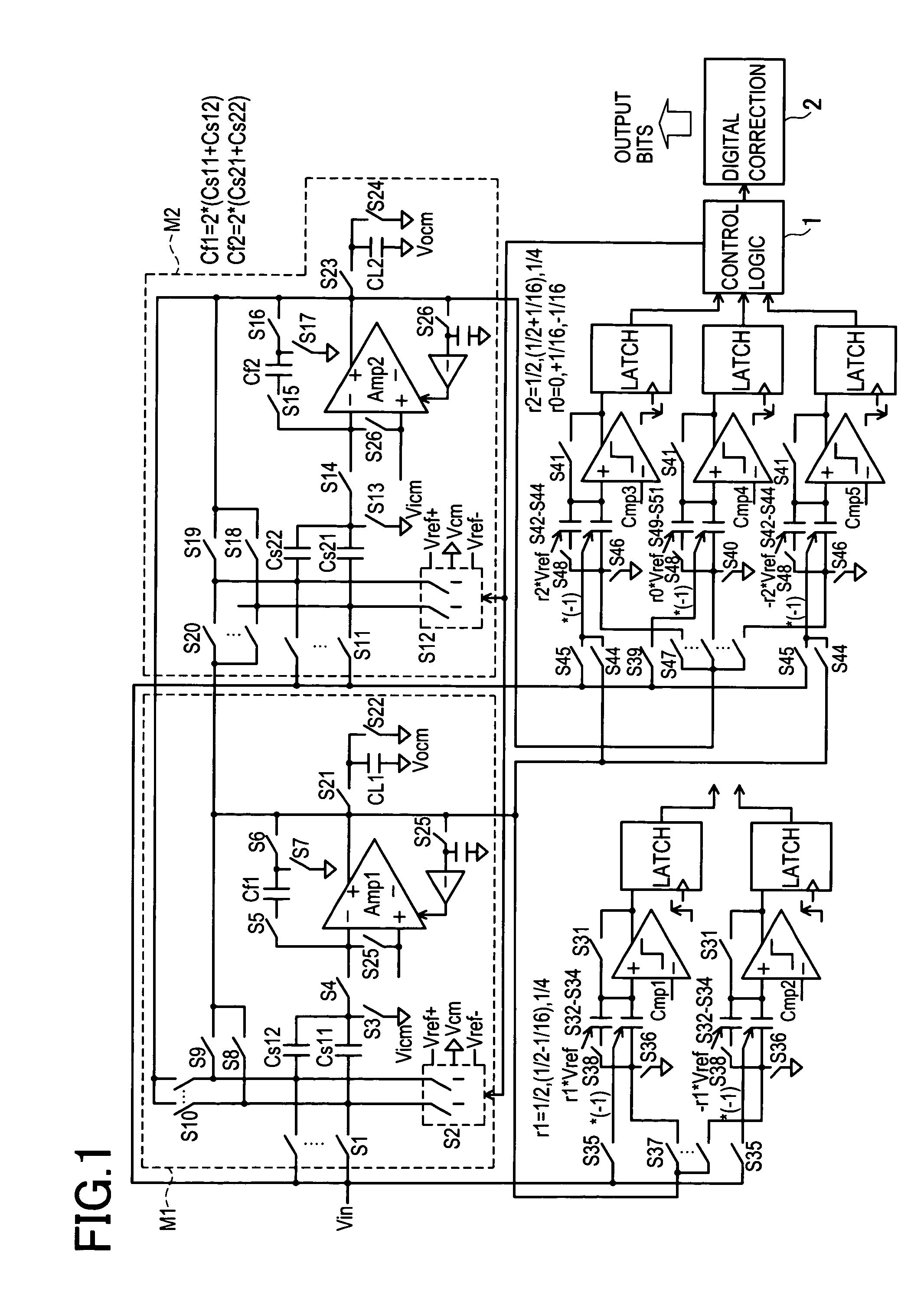Parallel oversampling algorithmic A/D converter and method of using the same
- Summary
- Abstract
- Description
- Claims
- Application Information
AI Technical Summary
Benefits of technology
Problems solved by technology
Method used
Image
Examples
Embodiment Construction
[0069]Now, a description will be given of preferred embodiments of the present invention with reference to the accompanying drawings. A circuit diagram of an A / D converter according to this embodiment is shown in FIG. 1. In the circuit diagram, one group centered on an operational amplifier Amp1 is the first ΣΔ modulator M1, and one group centered on an operational amplifier Amp2 is the second ΣΔ modulator M2. In the case of fully differential type, this circuit diagram shows only one side of the real circuit for simplicity. An analog input signal Vin is input into both of those ΣΔ modulators. In each of those ΣΔ modulators, an integrator is made up of an amplifier and capacitors which are arranged in parallel (Amp1 and Cf1, Amp2 and Cf2). A group centered on a comparator and a latch at a lower side of FIG. 1 is an operation section.
[0070]The ΣΔ modulators will be described in more detail. In the ΣΔ modulator M1, two capacitors Cs11 and Cs12 (hereinafter referred to as “sampling cap...
PUM
 Login to View More
Login to View More Abstract
Description
Claims
Application Information
 Login to View More
Login to View More - R&D
- Intellectual Property
- Life Sciences
- Materials
- Tech Scout
- Unparalleled Data Quality
- Higher Quality Content
- 60% Fewer Hallucinations
Browse by: Latest US Patents, China's latest patents, Technical Efficacy Thesaurus, Application Domain, Technology Topic, Popular Technical Reports.
© 2025 PatSnap. All rights reserved.Legal|Privacy policy|Modern Slavery Act Transparency Statement|Sitemap|About US| Contact US: help@patsnap.com



